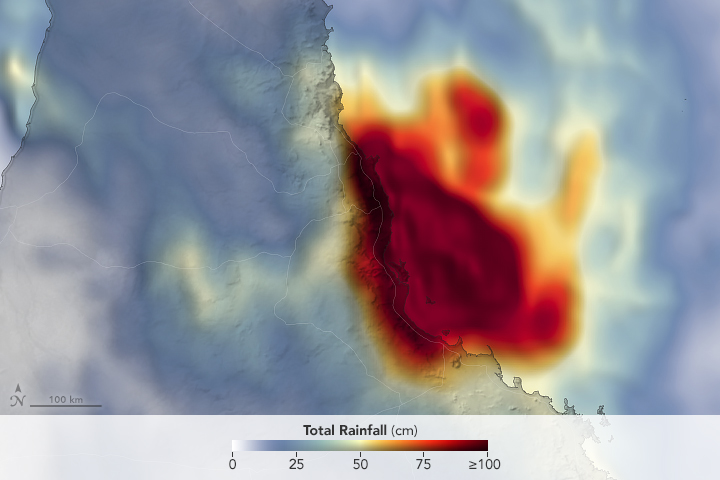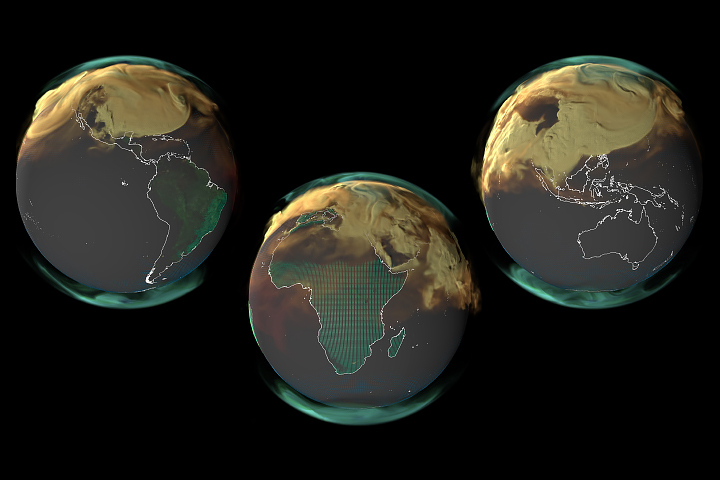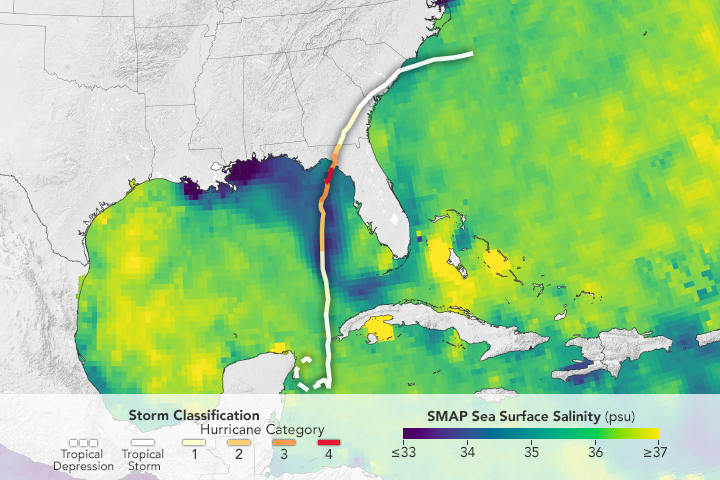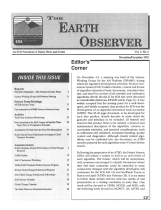



Recent Imagery
You will be directed to the NASA Visible Earth webpage when you select Images by Mission below, or click on the images at right that are randomly generated to represent four out of all possible topics.
The Earth Observer has a new look! Visit the NEW Earth Observer website.
The Earth Observer: Nov - Dec, 1993
In This Issue
Click title below to view page
Reports
Executive Summary—The Payload Advisory Panel ... 3
Science Working Group AM-Platform Meeting ... 11
Science Team Meetings
ASTER Science Team ... 17
First International MIMR Science Advisory Group ... 20
Articles
Total Solar Irradiance Monitoring ... 23
Data Assimilation for EOS: Impact of Satellite Water Vapor Data on Precipitation Estimates ... 28
Availability of Solid Particles from the Stratosphere ... 31
North Dakota Tracer Experiment Investigates Cloud Transport Processes ... 34
Announcements
NASA Graduate Student Fellowships in Global Change Research ... 2
UARS Update ... 10
SAC-C Instrument Workshop ... 19
USRA-GSFC Graduate Student Summer Program ... 22
NOAA Global Change Postdoctoral Program ... 27
DoE Global Change Postdoctoral Fellowships ... 33
EOS Science Calendar ... 38
Global Change Calendar ... 39
The Earth Observer Information/Inquiries ... 38
Editor's Corner
Michael King, EOS Senior Project Scientist
On November 4-5, a meeting was held of the Science Working Group for the AM Platform (SW AMP), during which the algorithm development schedule, Product Generation System (PGS) Toolkit schedule, content and format of algorithm theoretical basis documents, simulated data sets, and need for a review of all scientific and calibration algorithms Oevels lB and 2) for EOS AM, were discussed in considerable detail (see SW AMP article, Page 11). It was widely accepted that the starting point for a well-developed, and widely accepted, data product for EOS was the development of an algorithm theoretical basis document (ATBD). This 30-40 page document, to be developed for each data product, should describe in some detail the granules and metadata to be included, all internal and external data product flows to be utilized, a physical and mathematical description of the algorithm, variance or uncertainty estimates, and practical considerations, such as calibration and validation, exception handling, quality control and diagnostics. Although closely related algorithms may be combined into one document, an A TBD must be prepared for each algorithm some 4-5 years before launch.
Following the preparation of an ATBD, the Project Science Office will initiate a written as well as an oral review of each algorithm. The former, which will be anonymous, with reviewers encouraged to identify themselves where they feel their comments could be extended to more constructive dialogue with the algorithm developers, will commence for the EOS AM, LIS and SeaWinds Teams in March and April (ATBDs due February 28). It is my intent to follow these written reviews with two weeks of oral presentation to a visiting committee in early May. One week will be devoted to CERES, MODIS, and MISR, with the following week devoted to MOPITI, LIS, ASTER, and SeaWinds.
Read more...

